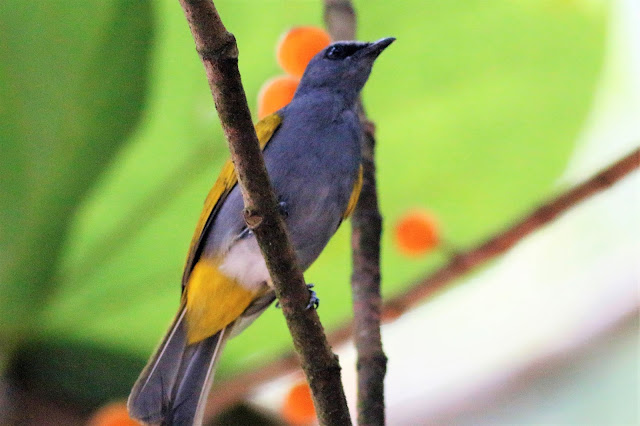This year marks the 10th anniversary of my endeavour of watching waders in the mudflats. I celebrated it by watching the highest gathering of waders in my entire life - almost 5000 of them in total ! The location was in Kota Kuala Muda site.
The waders gathered in 4 major clusters stretching almost 400 meters on the entire beach front. Each cluster consisted of almost 1K plus of waders.
Cluster # 1
Cluster # 2
Cluster # 3
Cluster # 4
The tide was just rising when I reached the site at 10.30am and I continued watching them until about 12.35pm. Although it was blazing hot in the middle of the flats but the strong northeast monsoon wind coming from the sea makes it bearable. Most of the waders were quite a distance away as the rising tide was not at its peak yet. Here are some of the closer ones.
Lesser Sand Plovers (mainly Tibetan race) make up the most of them - approx. 2K.
Most of the Lesser Sand Plovers are still in their winter plumage. Probably just 0.1% of them showed glimpses of their emerging breeding plumage.
Up next are the Terek Sandpipers - approx. 100
Common Redshanks numbers were quite decent at approx 50 - 60.
The one in the middle has a bill curved down like a Curlew Sandpiper.
Other individual waders sighted were Whimbrel, Eurasian Curlew as well as Ruddy Turnstone.
This Grey Heron could have just gobble up a wader anytime if it wishes too but it looks like it prefer to be their guardian instead.
Brown-headed Gulls (60 of them) makes up the most non-waders seen at this time. Here you can see them accompanying a group of Little Terns and Whiskered Terns.
Brown-headed Gulls cruising leisurely along the shoreline.
Here is a summary of the total water birds (including waders) seen in Malaysia from 2016 to 2020 collated from the Asian Waterbirds Censors (AWC). Looks like the numbers in Malaysia have increased almost 2x since 2016.
Source: EAAFP website
THE RESILIENT AND PERSEVERANCE OF HUMANITY AGAINST A BIOLOGICAL ADVERSARY ARE NEVER REALLY TESTED UNTIL NOW !
TILL WE MEET AGAIN !
STAY SAFE AND HEALTHY !















































